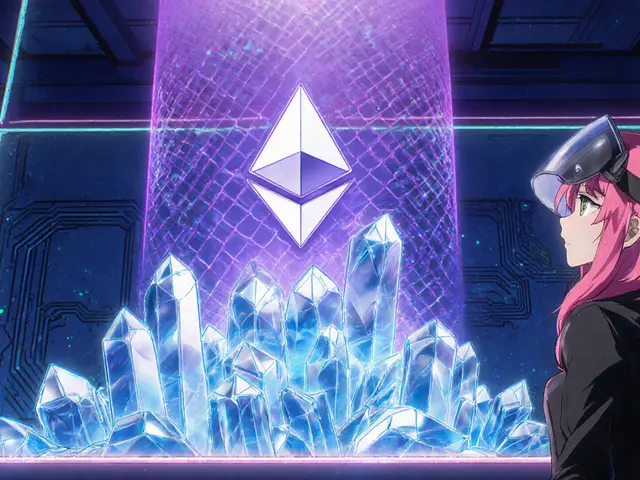Sanctions Impact Calculator
This calculator demonstrates potential transaction impacts based on real-world data from the article:
- Garantex: Over $100M in illicit transactions (2019-2025)
- A7A5 network: $8B+ in transactions (2024-2025)
- Current freeze rate: 35-65% for sanctioned platforms
Enter amount and select an exchange to see impact
Important: This calculator shows potential impacts based on reported data. Actual results may vary based on specific transaction patterns, blockchain analysis tools, and enforcement actions.
When Russia was cut off from SWIFT and Western banking systems after 2022, cryptocurrency became a lifeline. For businesses, individuals, and even state-linked actors, crypto offered a way to move money without banks. But that lifeline is now under direct attack. The U.S. government has turned its focus from traditional financial sanctions to dismantling the crypto infrastructure that helps Russia bypass them. And it’s working - but not without creating a new, more dangerous game of cat-and-mouse.
Garantex: The Exchange That Started It All
Garantex wasn’t just another crypto exchange. Founded in 2017 by Sergey Mendelev, Aleksandr Mira Serda, and Pavel Karavatsky, it became one of the largest Russian-language platforms for trading cryptocurrency. It didn’t just serve retail users - it handled massive volumes of transactions tied to ransomware, hacking, and sanctions evasion. By 2022, the U.S. Treasury’s Office of Foreign Assets Control (OFAC) labeled Garantex a sanctioned entity under Executive Order 14024, accusing it of operating in Russia’s financial services sector. But Garantex didn’t shut down. It adapted. It kept running, using complex wallet obfuscation techniques to hide the flow of funds. Blockchain analytics firm Elliptic tracked over $100 million in illicit transactions through Garantex since 2019. That’s not speculation - it’s documented evidence. The U.S. Secret Service used that data to act. On March 6, 2025, they raided Garantex’s infrastructure: seized three domains, confiscated servers, and froze $26 million in USDT. Co-founder Aleksej Besciokov was arrested in India while on vacation. The exchange was crippled.Grinex: The Successor That Was Doomed From Day One
Within days of Garantex’s takedown, a new platform appeared: Grinex. Its own website openly admitted it was created “in response to sanctions and asset freezes that affected Garantex.” That admission became its death sentence. On August 14, 2025, OFAC designated Grinex under Executive Order 13694 - the same law used to target cybercriminal infrastructure. The agency didn’t just block Grinex. They also sanctioned three Garantex executives and six companies linked to the operation, including firms in Kyrgyzstan that helped manage the backend. Grinex wasn’t just a clone - it was a direct continuation. And OFAC knew it. What made Grinex dangerous wasn’t just its name. It was the A7A5 token.A7A5: The Ruble-Backed Crypto That Tried to Replace USDT
Before 2025, Russian users relied on USDT (Tether) because it was stable, widely accepted, and easy to trade. But USDT has a fatal flaw: it’s centralized. Tether can freeze wallets. When Garantex went offline, users lost access to their USDT holdings. That’s when A7A5 entered the scene. A7A5 is a stablecoin pegged to the Russian ruble, issued by a Kyrgyzstani firm. Unlike USDT, it was designed to be resistant to freezes. It ran on TRON and Ethereum, two blockchains with high transaction throughput. Russian users flocked to it. Elliptic estimated that wallets tied to the A7 network - including A7A5, A7 Agent, InDeFi Bank, and others - received over $8 billion in cryptocurrency since early 2024. That’s not a typo. Eight billion dollars. And that’s likely just the tip of the iceberg. But here’s the catch: A7A5 wasn’t anonymous. It was designed to be hard to block - not hard to trace. Elliptic had been watching. By mid-2025, they had built tools to screen A7A5 transactions. On August 14, 2025 - the same day OFAC sanctioned Grinex - unusual activity spiked in A7A5 wallets. It wasn’t a hack. It was a panic. The operators were moving funds, changing keys, trying to outrun enforcement.






